-
 Bitcoin
Bitcoin $117500
2.15% -
 Ethereum
Ethereum $3911
6.19% -
 XRP
XRP $3.316
10.79% -
 Tether USDt
Tether USDt $1.000
0.01% -
 BNB
BNB $787.2
2.24% -
 Solana
Solana $175.2
4.15% -
 USDC
USDC $0.9999
0.00% -
 Dogecoin
Dogecoin $0.2225
8.40% -
 TRON
TRON $0.3383
0.28% -
 Cardano
Cardano $0.7868
6.02% -
 Stellar
Stellar $0.4382
9.34% -
 Hyperliquid
Hyperliquid $40.92
7.56% -
 Sui
Sui $3.764
7.63% -
 Chainlink
Chainlink $18.48
10.66% -
 Bitcoin Cash
Bitcoin Cash $582.1
1.88% -
 Hedera
Hedera $0.2601
6.30% -
 Avalanche
Avalanche $23.33
4.94% -
 Ethena USDe
Ethena USDe $1.001
0.02% -
 Litecoin
Litecoin $122.3
2.04% -
 UNUS SED LEO
UNUS SED LEO $8.969
-0.27% -
 Toncoin
Toncoin $3.339
0.86% -
 Shiba Inu
Shiba Inu $0.00001287
4.30% -
 Uniswap
Uniswap $10.43
7.38% -
 Polkadot
Polkadot $3.861
5.08% -
 Dai
Dai $1.000
0.02% -
 Bitget Token
Bitget Token $4.513
3.41% -
 Monero
Monero $267.7
-6.18% -
 Cronos
Cronos $0.1499
4.14% -
 Pepe
Pepe $0.00001110
5.15% -
 Aave
Aave $284.9
8.28%
Which one is more suitable for beginners, SOL spot or contract? What is the difference in risk between the two?
SOL spot trading involves buying and selling the cryptocurrency directly, while contract trading uses leveraged contracts based on SOL's price, suitable for experienced traders.
May 03, 2025 at 11:49 am
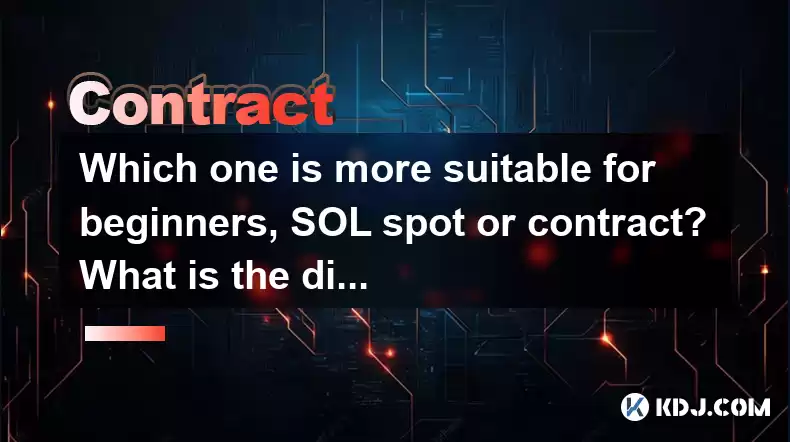
Introduction to SOL Spot and Contract Trading
When entering the world of cryptocurrency, beginners often face the dilemma of choosing between spot trading and contract trading, specifically with cryptocurrencies like Solana (SOL). Spot trading involves buying and selling SOL directly, while contract trading involves trading contracts that derive their value from the underlying asset, SOL. Understanding the nuances between these two types of trading is crucial for beginners to make informed decisions and manage risks effectively.
What is SOL Spot Trading?
SOL spot trading is the process of buying and selling Solana (SOL) directly on a cryptocurrency exchange. When you engage in spot trading, you are trading the actual cryptocurrency rather than a derivative. This means that if you buy SOL at a certain price, you own the SOL and can hold it in your wallet until you decide to sell it.
- To start spot trading SOL:
- Choose a reputable cryptocurrency exchange that supports SOL trading.
- Create an account and complete the necessary verification processes.
- Deposit funds into your account, either in fiat currency or another cryptocurrency.
- Navigate to the SOL trading pair (e.g., SOL/USDT) on the exchange.
- Place a buy order for SOL at your desired price.
- Once the order is filled, the SOL will be credited to your exchange wallet.
What is SOL Contract Trading?
SOL contract trading, also known as futures trading, involves trading contracts that derive their value from the price of Solana (SOL). These contracts allow traders to speculate on the future price of SOL without actually owning the cryptocurrency. Contract trading often involves leverage, which can amplify both gains and losses.
- To start contract trading SOL:
- Choose a cryptocurrency exchange that offers SOL futures contracts.
- Create an account and complete the necessary verification processes.
- Deposit funds into your account, as margin for your trades.
- Navigate to the SOL futures section on the exchange.
- Choose the contract you want to trade and decide on the leverage you want to use.
- Place a buy or sell order for the contract at your desired price.
- Monitor your position and manage it according to market movements.
Risk Comparison: SOL Spot vs. Contract Trading
The risk profiles of SOL spot and contract trading differ significantly, and understanding these differences is essential for beginners.
Risks of SOL Spot Trading:
- Market Risk: The value of SOL can fluctuate, and you could lose money if the price drops after you buy.
- Liquidity Risk: If the market for SOL becomes illiquid, you might not be able to sell your holdings at your desired price.
- Counterparty Risk: There is a risk that the exchange could fail or be hacked, potentially leading to loss of funds.
Risks of SOL Contract Trading:
- Leverage Risk: Using leverage can amplify losses, and you could lose more than your initial investment.
- Liquidation Risk: If the market moves against your position, your contract could be liquidated, resulting in significant losses.
- Complexity Risk: Contract trading is more complex and requires a deeper understanding of the market, which can lead to mistakes and losses.
Suitability for Beginners: SOL Spot vs. Contract Trading
For beginners, SOL spot trading is generally more suitable due to its simplicity and lower risk profile. When you trade SOL on the spot market, you are dealing directly with the cryptocurrency, which is easier to understand and manage. Spot trading does not involve leverage, which means the potential for significant losses is lower compared to contract trading.
On the other hand, SOL contract trading is more suitable for experienced traders who understand the complexities of futures markets and are comfortable with the higher risks involved. Contract trading requires a good understanding of leverage, margin, and the potential for liquidation, which can be overwhelming for beginners.
Practical Considerations for Beginners
When deciding between SOL spot and contract trading, beginners should consider their risk tolerance, investment goals, and level of understanding of the cryptocurrency market.
- Risk Tolerance: If you are risk-averse, spot trading is likely a better choice. If you are willing to take on higher risks for potentially higher rewards, you might consider contract trading after gaining more experience.
- Investment Goals: If your goal is to hold SOL as a long-term investment, spot trading is more appropriate. If you are looking to speculate on short-term price movements, contract trading might be more suitable.
- Level of Understanding: If you are new to cryptocurrency trading, start with spot trading to build your knowledge and experience. Once you are more comfortable, you can explore contract trading.
Frequently Asked Questions
Q: Can I switch from SOL spot trading to contract trading easily?
A: Yes, you can switch between SOL spot and contract trading on the same exchange, but you will need to understand the mechanics of contract trading and manage the associated risks carefully. Ensure you have a solid grasp of spot trading before moving to contract trading.
Q: Are there any fees associated with SOL spot and contract trading?
A: Yes, both spot and contract trading involve fees. Spot trading typically involves trading fees, which are a percentage of the transaction amount. Contract trading may involve trading fees, as well as funding fees if you hold positions overnight. Always check the fee structure of your chosen exchange.
Q: How can I manage the risks of SOL contract trading?
A: To manage the risks of SOL contract trading, use stop-loss orders to limit potential losses, start with low leverage to understand the market better, and never invest more than you can afford to lose. Continuous learning and staying updated with market trends are also crucial.
Q: Is it possible to trade SOL contracts without leverage?
A: Some exchanges offer options for trading SOL contracts without leverage, known as "cross margin" or "isolated margin" with a leverage of 1x. However, these options are less common, and most contract trading involves some level of leverage. Always check the specific features of your chosen exchange.
Disclaimer:info@kdj.com
The information provided is not trading advice. kdj.com does not assume any responsibility for any investments made based on the information provided in this article. Cryptocurrencies are highly volatile and it is highly recommended that you invest with caution after thorough research!
If you believe that the content used on this website infringes your copyright, please contact us immediately (info@kdj.com) and we will delete it promptly.
- Tron's Sell-Off Spurs Altcoin Shift: What's Next for TRX?
- 2025-08-08 08:30:12
- Sleep Token's US Takeover: Thornhill Rides the 'Even In Arcadia' Wave
- 2025-08-08 08:30:12
- FTT Token's Wild Ride: Creditor Repayments vs. Market Drop - A New Yorker's Take
- 2025-08-08 07:10:12
- Floki Crypto Price Prediction: Riding the Robinhood Rocket or Just a Meme?
- 2025-08-08 07:15:12
- EigenLayer, Restaking, and Ethereum: Navigating the Hype and the Hazards
- 2025-08-08 06:30:12
- Super Bowl 59: Jon Batiste to Jazz Up the National Anthem
- 2025-08-08 06:30:12
Related knowledge

What are the specific maker and taker fees on KuCoin Futures?
Aug 08,2025 at 08:28am
Understanding Maker and Taker Fees on KuCoin FuturesWhen trading on KuCoin Futures, users encounter two primary types of fees: maker fees and taker fe...
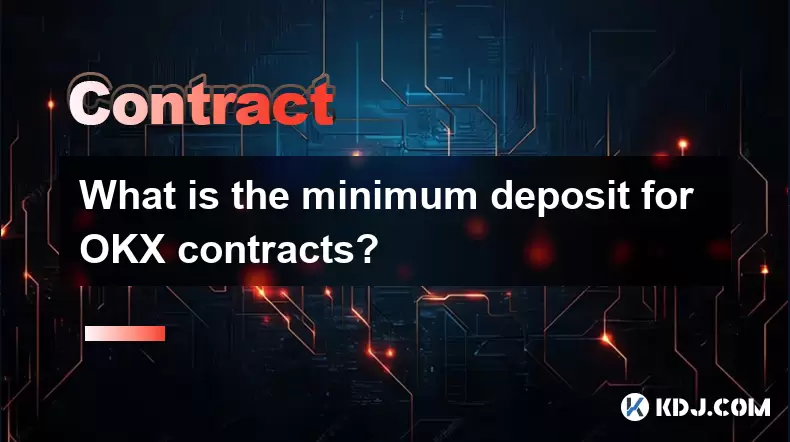
What is the minimum deposit for OKX contracts?
Aug 08,2025 at 07:00am
Understanding OKX Contract Trading BasicsOKX is one of the leading cryptocurrency derivatives exchanges, offering a wide range of perpetual and future...
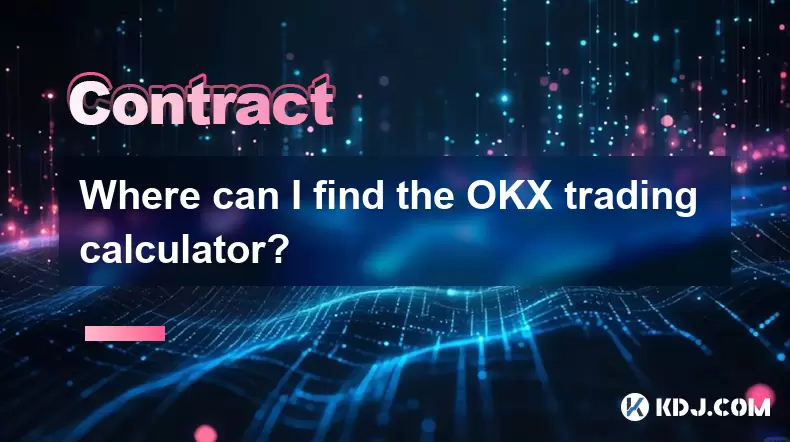
Where can I find the OKX trading calculator?
Aug 08,2025 at 07:49am
Understanding the OKX Trading Calculator FunctionalityThe OKX trading calculator is a powerful analytical tool designed to assist traders in estimatin...
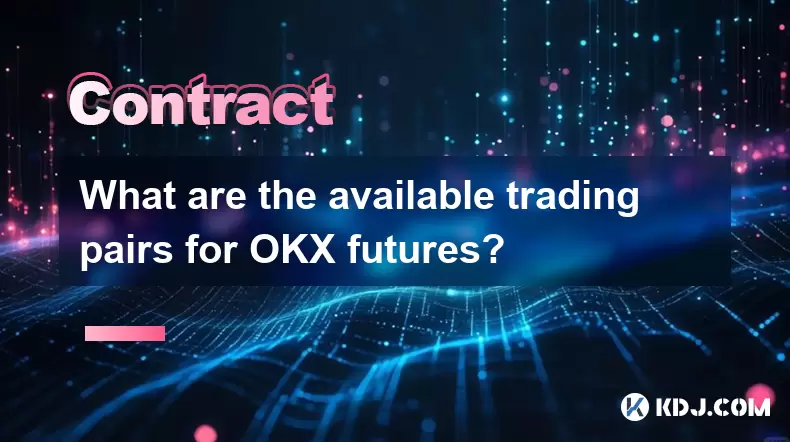
What are the available trading pairs for OKX futures?
Aug 08,2025 at 08:49am
Understanding OKX Futures Trading PairsOKX is one of the leading cryptocurrency derivatives exchanges, offering a wide range of futures trading pairs ...
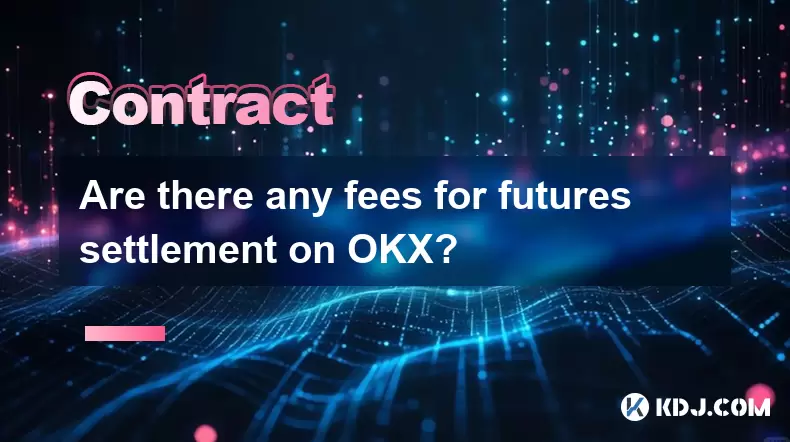
Are there any fees for futures settlement on OKX?
Aug 08,2025 at 05:35am
Understanding Futures Settlement on OKXFutures settlement on OKX refers to the process by which open futures contracts are automatically closed or mar...
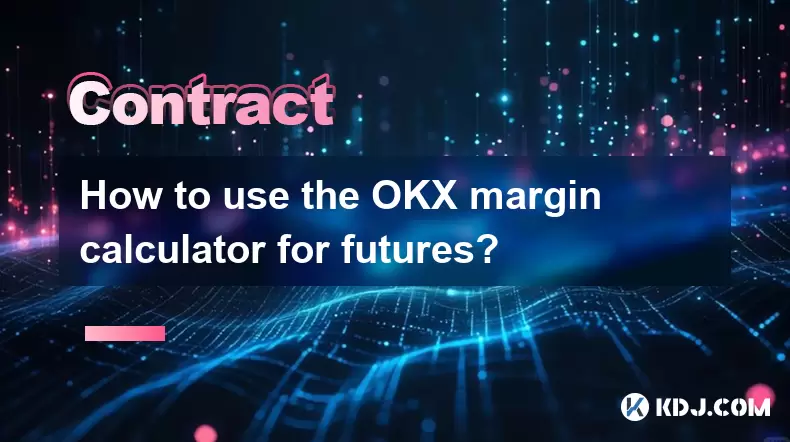
How to use the OKX margin calculator for futures?
Aug 08,2025 at 05:15am
Understanding the OKX Margin Calculator for FuturesThe OKX margin calculator is a specialized tool designed to assist traders in estimating the requir...

What are the specific maker and taker fees on KuCoin Futures?
Aug 08,2025 at 08:28am
Understanding Maker and Taker Fees on KuCoin FuturesWhen trading on KuCoin Futures, users encounter two primary types of fees: maker fees and taker fe...

What is the minimum deposit for OKX contracts?
Aug 08,2025 at 07:00am
Understanding OKX Contract Trading BasicsOKX is one of the leading cryptocurrency derivatives exchanges, offering a wide range of perpetual and future...

Where can I find the OKX trading calculator?
Aug 08,2025 at 07:49am
Understanding the OKX Trading Calculator FunctionalityThe OKX trading calculator is a powerful analytical tool designed to assist traders in estimatin...

What are the available trading pairs for OKX futures?
Aug 08,2025 at 08:49am
Understanding OKX Futures Trading PairsOKX is one of the leading cryptocurrency derivatives exchanges, offering a wide range of futures trading pairs ...

Are there any fees for futures settlement on OKX?
Aug 08,2025 at 05:35am
Understanding Futures Settlement on OKXFutures settlement on OKX refers to the process by which open futures contracts are automatically closed or mar...

How to use the OKX margin calculator for futures?
Aug 08,2025 at 05:15am
Understanding the OKX Margin Calculator for FuturesThe OKX margin calculator is a specialized tool designed to assist traders in estimating the requir...
See all articles

























































































